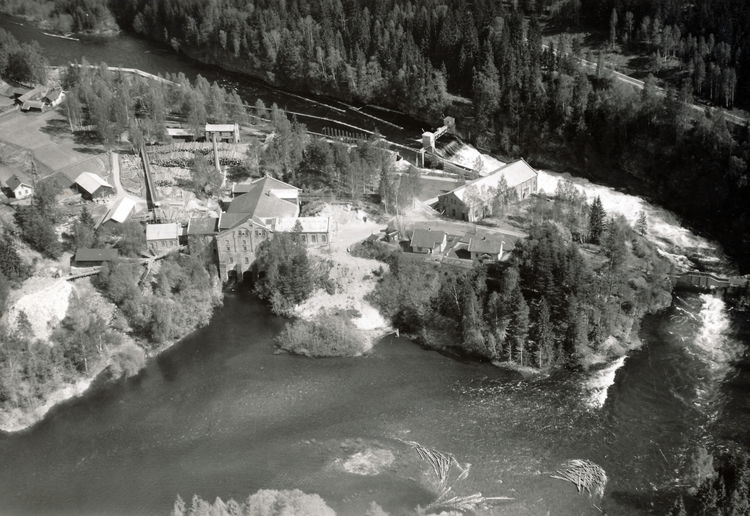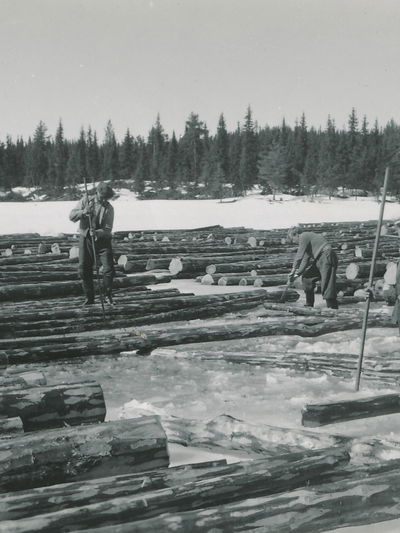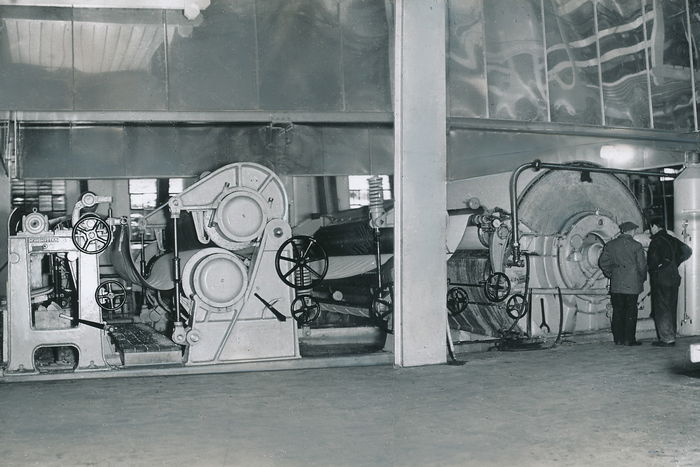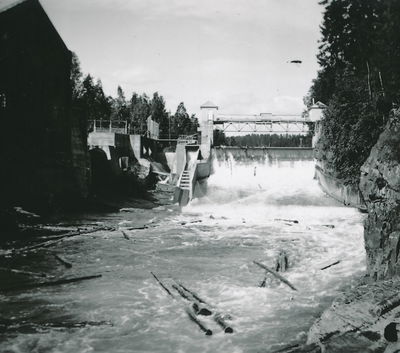
Overview of A/S Kistefos Træsliberi approx. 1950-55. Photo: Foto: Widerøe’s Flyveselskap A/S, avd. for Fotogrammertri.
The history of Kistefos
The founder of A/S Kistefos Træsliberi, Consul Anders Sveaas (1840-1917), Was a typical entrepreneur and a visionary with a strong business sense. He acquired the rights to the waterfall, and the land to build the factory buildings on, and in 1889 founded A/S Kistefos Træsliberi, of which he was the majority share-holder.
In 1890, after a year and a half of intensive construction, the mill began producing wood pulp. Production continued up until 1955. Wood pulp was an important basic product in the manufacture of cheaper paper products.
In the autumn of 1953, a 30-year lease agreement was signed between Follum Fabrikker and A/S Kistefos Træsliberi. The main features of the agreement were that Kistefos would continue as a power and timber supplier at market prices to Follum, while Follum would take over the production and production expenses at Kistefos from 1st of January 1954. On the 25th of June 1955, all wood pulp production at Kistefos was transferred to Follum.
However, most of the machinery, inventory, and fixtures remained in their original element, when the factory was shut down. The lease agreement between Follum and A/S Kistefos Træsliberi was very clear: the wood pulp mill at Kistefoss was to be kept reasonably prepared to resume production, should the agreement be terminated by either party at a later date. This is the core element to why the pulp mill stands as intact as it does today.
As a result of disagreements within the Sveaas family, A/S Kistefos Træsliberi was sold out of the family's ownership. In 1991, the hydro-electric power stations were sold to the municipal energy company. In 1993, 85% of the shares of A/S Kistefos Træsliberi were sold to Christen Sveaas, the founder’s grandson. As one of the terms, Christen Sveaas had to establish an industrial history museum at the factory site after A/S Kistefos Træsliberi. Sveaas went in with great commitment and created the unique, beautiful and exciting Kistefos that exist today with the industrial museum, art and sculpture.
There have been many wood pulp mills powered by waterfalls in Scandinavia. In Norway alone, there have been about 100 pulp mills. The Industrial Museum, in A/S Kistefos Træsliberi's production premises, is the only one that has preserved both buildings and production equipment almost in its entirety. Kistefos, therefore, conveys industrial history that is unique in Norwegian and Scandinavian contexts, and stands today as a unique monument of the first period of an industrialized, modern Norway!

Timber being laid out to dry on the ice at Svartvannet nearby Veståsen in the Kistefos forests ca. 1955. Photo: Kistefos' Photo collection.

The wet lap machine was installed in 1938, and was the biggest modernization completed in the pulp mill. Photo: Kistefos' Photo collection.

Kistefossen with logs on their way down the Randselva approx. 1950. Photo: Kistefos' Photo collection.